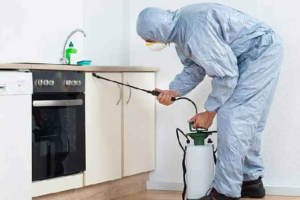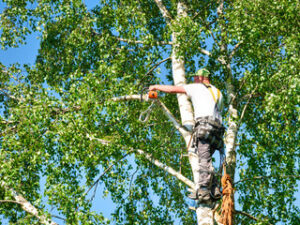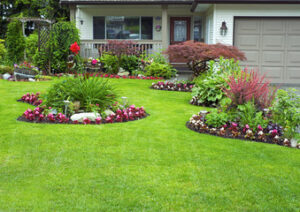Nuisance wildlife can enter homes and businesses, often causing damage and a foul odor. They can also spread diseases to humans and pets.
The first step is finding the source of the odor. This requires a thorough search of the home and building, including the roof soffits, chimneys, crawl space, and attic areas. Contact Animal Removal Dallas now!

The attic is a common place for nuisance wildlife to make its home. It is a dark and secluded area that can hide animals like birds, bats, squirrels, and mice.
Animals like to nest and raise young in safe places from predators and weather. They access these areas through gaps in your roof or walls, and they can be hard to spot. If you notice strange noises or pungent odors, contact a wild animal removal specialist. The professionals listed here will trap and remove the animal and offer long-term control solutions for your home or business.
The first step in attic animal removal is cleaning the area. This includes removing debris and nesting materials. It also involves vacuuming the attic to remove animal droppings. It is important to use a large commercial-grade vacuum that can reach into corners and crevices. Smaller vacuums are prone to sucking up insulation papers and causing more damage.
Next, the attic needs to be fogged. This is done to kill any pathogens and pheromone scents that may attract more animals. It is important to remove these contaminants because they can be a health hazard to humans and pets.
After the attic has been cleaned, it is a good idea to repair any damage that has been caused by the animals. This will prevent future infestations and prevent more animals from entering the attic. It is also a good idea to replace any damaged insulation.
If you have more than one animal in your attic, it is a good idea to call a professional. Nuisance wildlife should be removed from your property as quickly as possible before the problem worsens. The professionals listed here can help you get rid of the animals safely and humanely, and they can seal potential entry points to your home to prevent more problems. They can also trim tree limbs to prevent animals from climbing up to the roof and into the attic space. If possible, under state laws, the animal will be transported and given a chance to live in the wild again.
Crawl Space
The crawl space is often neglected and overlooked, but this area of a home holds a lot of potential. It provides easy access to plumbing, electrical wiring and HVAC ductwork in the house and can help prevent flooding in basements. It is also a good place to store items that don’t need to be stored in climate-controlled areas. However, since crawl spaces are cramped and humid, they need to be regularly inspected and maintained to avoid moisture problems, pest infestations and structural damage.
Moisture problems in a crawl space are usually the result of poor ventilation and insulation, or excessive humidity. If moisture is allowed to accumulate, it can cause wood rot and mold. This problem can then migrate upwards into living spaces of the home where it can cause respiratory issues, odors and trigger allergies. It can also foster termites and carpenter ants, which can cause serious structural damage to the home.
Crawl space signs of moisture problems include water stains, standing water and the presence of mold or mildew. If these signs are noticed, they should be promptly addressed to prevent further damage and costly repairs. Other signs of moisture problems in the crawl space include sagging floor joists, insect activity and rodent droppings.
Ventilation problems in crawl spaces can be caused by improperly sized vents and ductwork or missing or damaged insulation. Insufficient or missing insulation can lead to energy efficiency problems, and the presence of vapor barriers and vents that are open can cause excess humidity.
Rodents and other pests are attracted to moist and dark areas, so crawl spaces can become havens for rodents and insects. They can chew through wiring and air ducts, causing serious problems in the home. They can also create rodent droppings and gnaw through the foundation, which can lead to structural damage.
Basement
The basement is a possible location for wild animals to enter your home. They often do so looking for food or shelter, but can also cause damage by chewing through wires and destroying drywall. They are usually found in crawl spaces as well. Common wildlife that live in the basement include squirrels, raccoons, chipmunks, and snakes.
The most common type of basement is a finished, partially livable space that was designed or modified during construction to contain furniture, recreational objects and appliances, a kitchenette, laundry room, bathroom and sometimes a bedroom. It is also common for people to use their basements as a home office, gym or family/playroom.
While many people are happy to have a basement as their main living space, it is important to keep in mind that basements can be potential entry points for wildlife. Therefore, they should be inspected frequently for signs of animal activity.
If you notice a strange smell or see any evidence of animal droppings, scat or urine, it is best to contact a professional nuisance wildlife control expert. They can humanely trap and remove the animal, along with examining the surrounding area for any other possible entry points.
Some of the most common entry points for animals into the house are through open doors and windows, as well as cracks and gaps in the foundation. It is a good idea to examine your house exterior with binoculars to identify any obvious areas where wildlife may access it.
Squirrels are known to gnaw through the foundation of houses, and often live in basements. They look for food, water, and shelter, which can lead to expensive damage and repairs. It is recommended that you set several live squirrel traps throughout the basement, baiting them with peanut butter and checking them daily. This will help reduce the amount of damage that is done to your home by removing the animals and their traces.
Skunks are another animal that is notorious for entering basements, and can be a real health risk. These mammals can spray a foul-smelling liquid that can irritate skin, eyes, and respiratory tracts. Skunks also leave behind a trail of urine and other droppings.
Garage
Wild animals like raccoons and opossums are attracted to garbage and can damage your garage. They are known to rip through PVC pipes, chew through wires and insulation, and destroy lawns and gardens. Storing trash cans in your garage increases the risk of wildlife control issues, so you may need to invest in locking lids or bungee cords. Also, keep in mind that trapping animals inside your garage and taking them far away to release can have negative effects on their health and survival.








